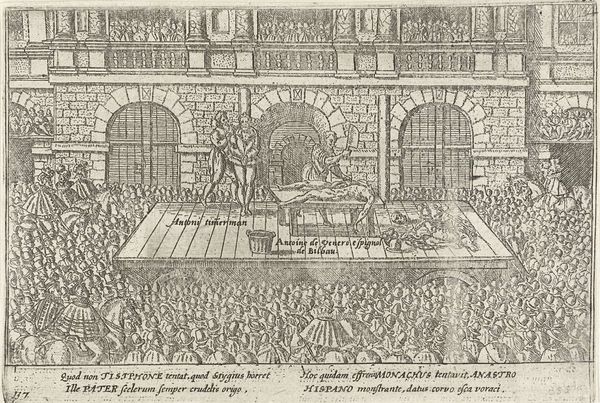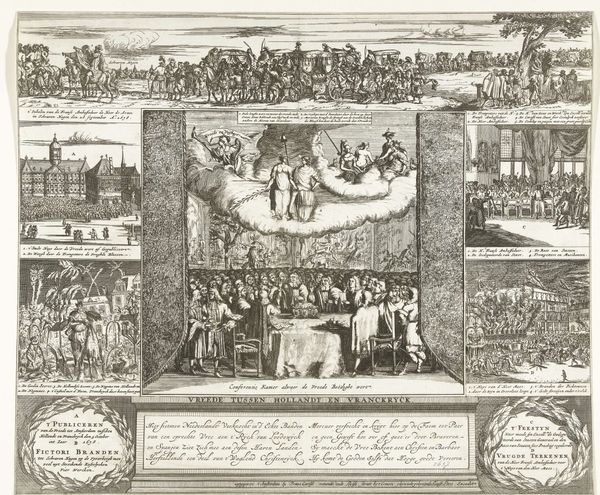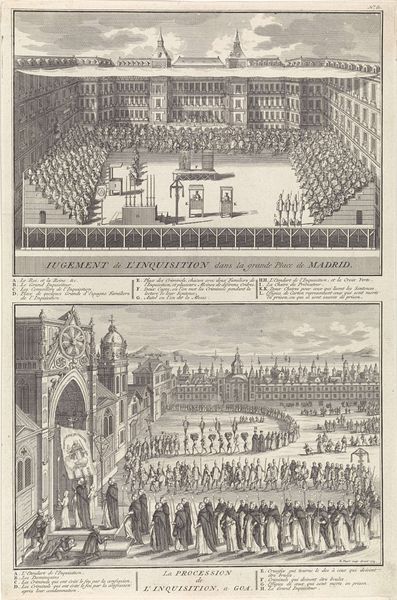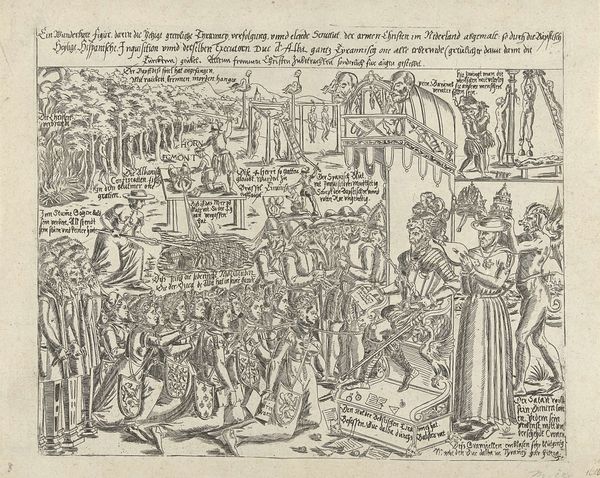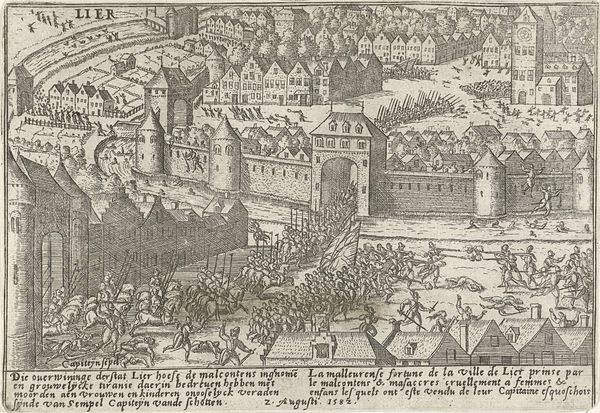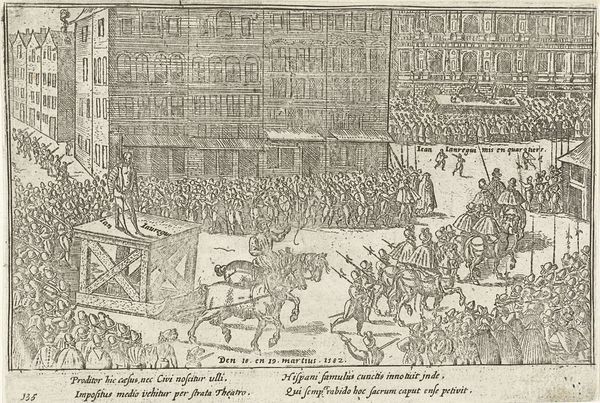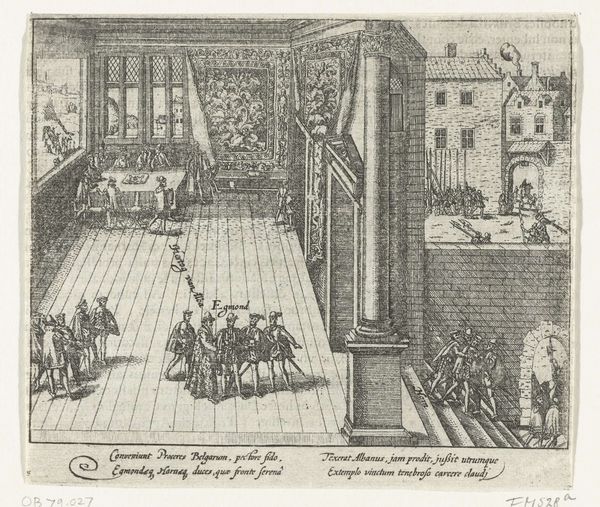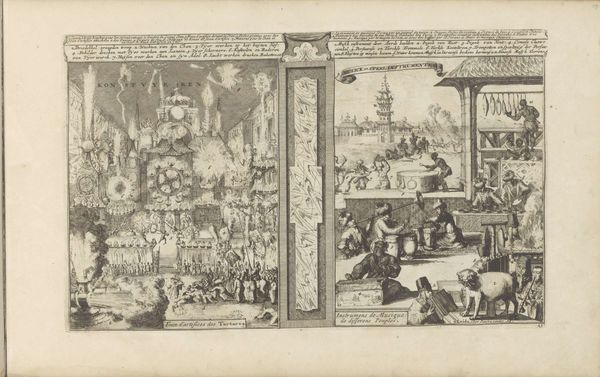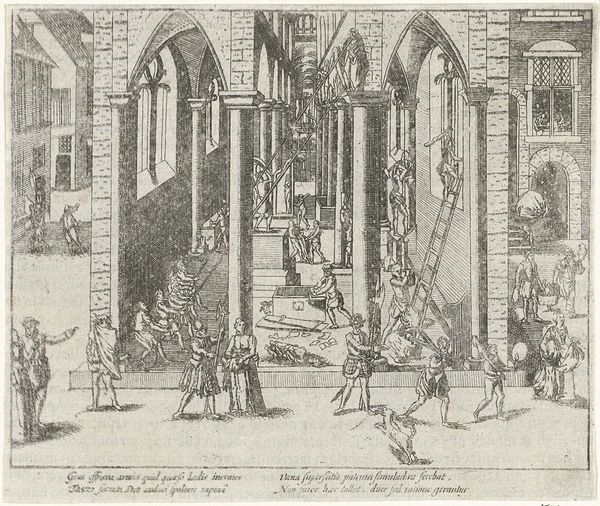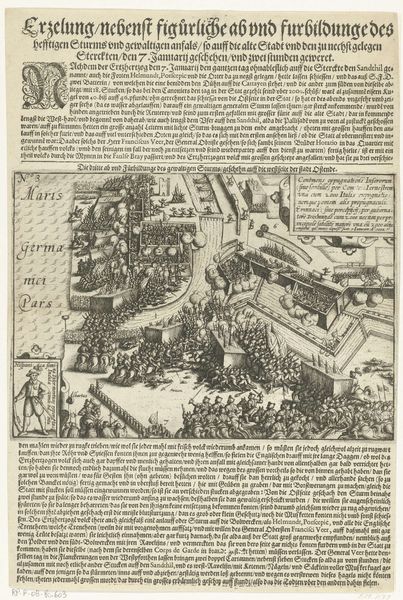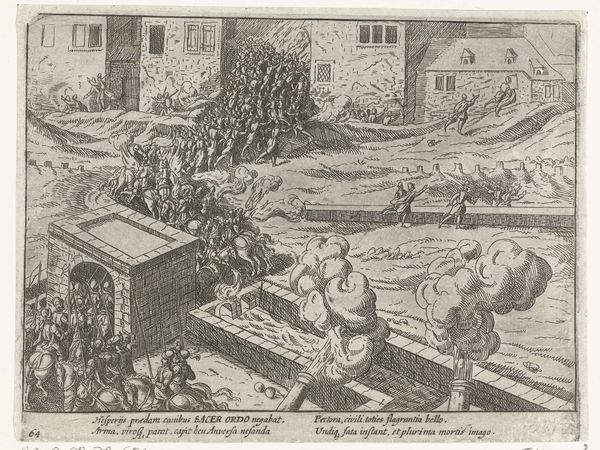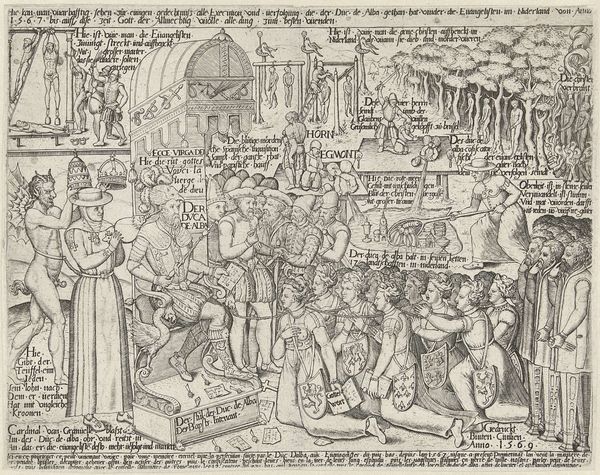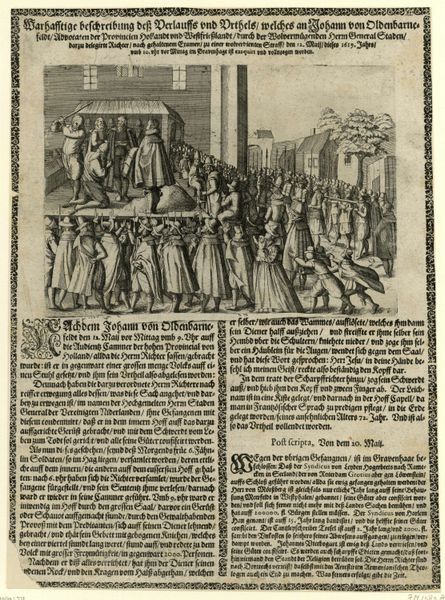
Verminking van het lichaam van Francesco Baza die samen met Salcedo de prins van Oranje en de hertog van Anjou wilde vermoorden, 1582 1613 - 1615
0:00
0:00
print, engraving
#
narrative-art
#
baroque
# print
#
old engraving style
#
cityscape
#
history-painting
#
engraving
Dimensions: height 123 mm, width 178 mm
Copyright: Rijks Museum: Open Domain
Curator: The stark lines and methodical detail here are quite striking. What is your immediate take on this print? Editor: A scene of gruesome public execution is depicted here; it’s difficult to avoid its grim emotional resonance. The tightly packed figures and repetitive lines create a claustrophobic feeling, magnifying the sense of dread. Curator: Indeed. This engraving, dating from 1613-1615, is titled "Verminking van het lichaam van Francesco Baza die samen met Salcedo de prins van Oranje en de hertog van Anjou wilde vermoorden, 1582". It's currently held at the Rijksmuseum. What this title lays out rather bluntly is how this work serves as propaganda about the consequences one faces when planning political assasination. Editor: Ah, so it's not just about displaying the brutality; it’s intended as a moral and political lesson? The figures are incredibly expressive for such a small format; that man raising his hand to the execution on horseback reminds me of a figure leading troops, using hand gestures as the signal for action in ancient Roman relief sculptures. Curator: Well, let’s consider the context: this piece, while attributed to anonymous, comes out of a culture of political pamphlets, cheaply made and widely distributed to sway public opinion, influence policy. These were visual broadsides as tools—in the making of consensus. And that cityscape in the background—Brugge?-- functions not just as a setting but as implicit support, right? Showing order, civic structures, etc. Editor: Yes, absolutely, a demonstration of order re-asserted after the chaos of the failed plot. And visually, notice how the artist segments the narrative—a sequential progression, almost like panels in a modern-day graphic novel. This reinforces a linear story of crime and punishment, hammering home the intended message. Curator: It shows the means of processing information about how an intended action will ultimately culminate for the plotter... a useful artifact in trying to dissect public morale and what matters to that populace. Editor: Examining it through that lens is indeed very insightful. I am still taken, though, by the enduring power of symbols employed to shape our perceptions of these figures even now centuries after their lives. Curator: True, even an uncredited engraver, can contribute to a deeper discourse.
Comments
No comments
Be the first to comment and join the conversation on the ultimate creative platform.
